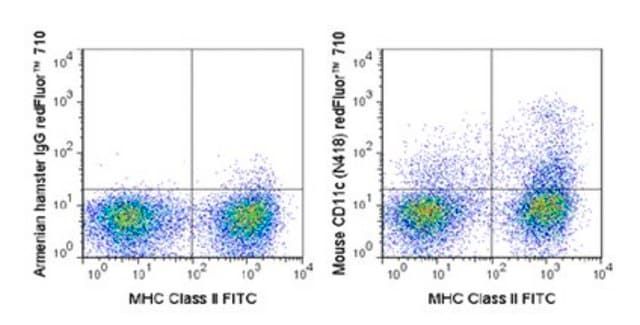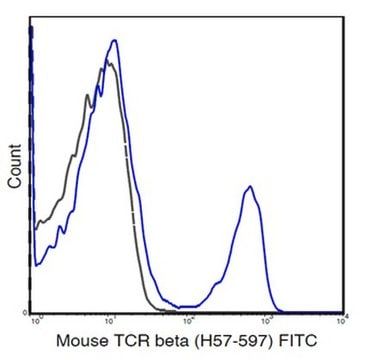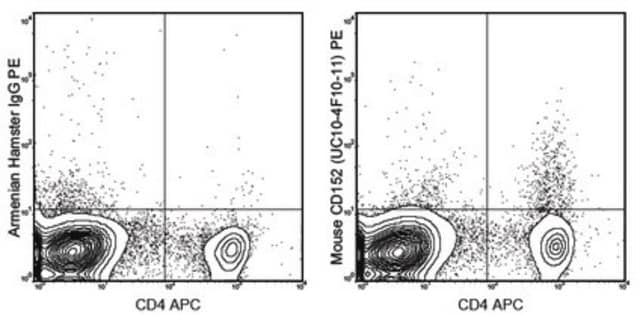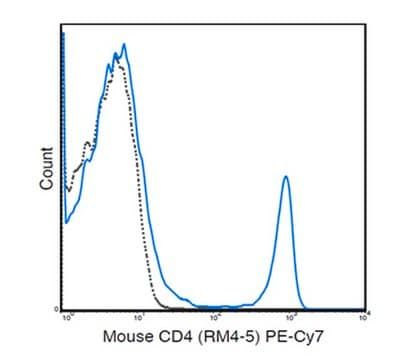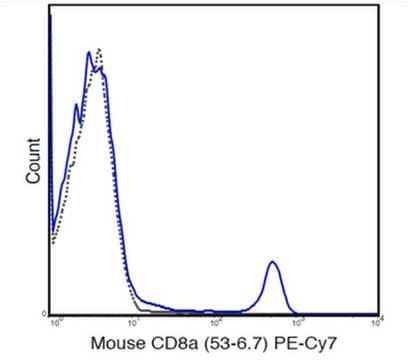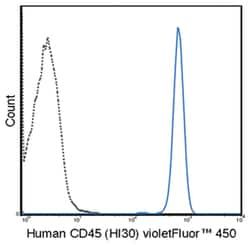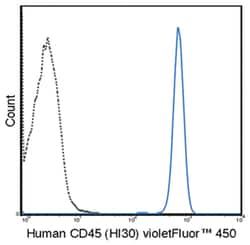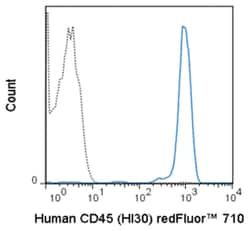MABF158C
Anti-CD152 (CTLA-4) (mouse), PE-Cy7, clone UC10-4F10-11 Antibody
clone UC10-4F10-11, from hamster(Armenian), PE-Cy7
Manufacturer: Sigma Aldrich
Synonym(S): Cytotoxic T-lymphocyte protein 4, Cytotoxic T-lymphocyte-associated antigen 4 (CTLA-4), CD152, CD152 (CTLA-4)
Select a Size
| Pack Size | SKU | Availability | Price |
|---|---|---|---|
| 25 μG | MABF158C-25-μG | In Stock | ₹ 13,730.00 |
| 100 μG | MABF158C-100-μG | In Stock | ₹ 24,340.00 |
MABF158C - 25 μG
In Stock
Quantity
1
Base Price: ₹ 13,730.00
GST (18%): ₹ 2,471.40
Total Price: ₹ 16,201.40
biological source
hamster (Armenian)
Quality Level
100
conjugate
PE-Cy7
antibody form
purified antibody
antibody product type
primary antibodies
clone
UC10-4F10-11, monoclonal
species reactivity
mouse
packaging
antibody small pack of 25 μg
technique(s)
flow cytometry: suitable
isotype
IgG
Related Products
Description
- General description: The UC10-4F10-11 antibody is specific for mouse CD152, commonly known as CTLA-4, a 33-37 kDa protein expressed as a homodimer on the surface of activated T and B cells, and on thymocytes. CTLA-4 is structurally similar, yet functionally disparate, to the T cell co-stimulatory molecule CD28. Both CTLA-4 and CD28 interact with the co-stimulatory molecules CD80 (B7-1) and CD86 (B7-2) on antigen-presenting cells, with CTLA-4 displaying a higher avidity than CD28. While CD28 typically delivers a potent co-stimulatory signal in support of T cell activation, CTLA-4 appears to act as a negative regulator of T cell activation and may contribute to the suppressor function of Treg cells.CTLA-4 proteins may be initially sequestered within Golgi vesicles, from which they can be rapidly transferred to and from the cell surface, a mechanism by which Treg cells can selectively impart suppressive functions. The UC10-4F10-11 antibody may be used for flow cytometric analysis of CTLA-4 expression.
- Application: This armenian hamster monoclonal Anti-CD152 (CTLA-4) Antibody (mouse), PE-Cy7, clone UC10-4F10-11, Cat. No. MABF1586 is validated for use in Flow Cytometry, for the detection of CD152 (CTLA-4).
- Quality: This monoclonal antibody was purified from tissue culture supernatant via affinity chromatography. The purified antibody was conjugated under optimal conditions, with unreacted dye removed from the preparation.Flow Cytometry Analysis: 0.125 μg from a representative lot detected CD152 (CTLA-4) in one million C57Bl/6 splenocytes.
- Other Notes: Concentration: Please refer to lot specific datasheet.
SAFETY INFORMATION
WGK
nwg
Flash Point(F)
Not applicable
Flash Point(C)
Not applicable
